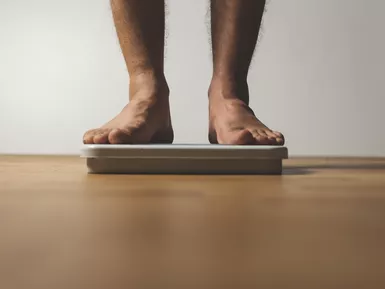Ozempic for Weight Loss: Science, Safety, and Synergy with Lifestyle

Ozempic for Weight Loss: Science, Safety, and Synergy with Lifestyle
If you’ve scrolled through health forums or followed weight loss trends lately, you’ve likely heard of Ozempic—a medication originally for type 2 diabetes now making waves as a weight loss aid. But how does it work? Is it safe? And can it replace diet and exercise? Let’s break it down with insights from science and leading health authorities.
What Is Ozempic, and How Does It Aid Weight Loss?
Ozempic (generic: semaglutide) belongs to GLP-1 receptor agonists, a class of drugs that mimic the glucagon-like peptide-1 hormone. Produced naturally in your gut, GLP-1 slows stomach emptying, reduces hunger signals to the brain, and enhances insulin release (Harvard Health). For weight loss, this translates to two key effects: increased satiety (you feel full longer) and reduced calorie intake.
Clinical trials validate its efficacy. The landmark STEP 1 study (published in the New England Journal of Medicine) found that participants without diabetes lost an average of 15% of their body weight over 68 weeks when using 2.4mg semaglutide weekly—compared to 2.4% with a placebo. The FDA approved semaglutide for chronic weight management in 2021 (under the brand name Wegovy), though Ozempic (lower-dose) is often prescribed off-label for this purpose.
The Critical Caveat: Ozempic Isn’t a Magic Pill
Here’s where many misunderstandings arise. Ozempic amplifies, but doesn’t replace, lifestyle changes. The STEP trials emphasized that participants received dietary counseling and were encouraged to exercise—factors that significantly boosted results. Without these, weight loss plateaus or reverses once the medication stops, as GLP-1 levels return to baseline.
Why Diet and Exercise Still Matter
- Metabolic adaptation: Prolonged calorie restriction slows metabolism. Exercise preserves muscle mass (which burns more calories at rest), mitigating this slowdown (ACE).
- Sustainability: Relying solely on medication ignores the behavioral habits—like mindful eating or portion control—that maintain weight long-term.
- Overall health: Exercise lowers cardiovascular risk, while a balanced diet ensures nutrient intake (critical, as Ozempic may reduce appetite for nutrient-dense foods).
Practical Tips for Safe, Effective Use
If you’re considering Ozempic, work closely with your doctor and adopt these strategies:
1. Prioritize Protein-Rich, Fiber-Dense Meals
With reduced hunger, it’s easy to skip nutrient-dense foods. Aim for 20-30g of protein per meal (eggs, Greek yogurt, lean meats) to preserve muscle and stabilize blood sugar. Add fiber (veggies, whole grains) to prevent constipation, a common side effect.
2. Start Slow with Exercise
Begin with 150 minutes of moderate cardio weekly (brisk walking, cycling) to boost calorie burn without overwhelming your body. Gradually add 2-3 strength training sessions to retain muscle—key for a toned, healthy physique (NASM guidelines).
3. Monitor Side Effects
Nausea, diarrhea, or constipation are common but usually mild. Severe or persistent symptoms (e.g., abdominal pain) may signal pancreatitis—a rare but serious risk (NIH warning). Never adjust doses without medical guidance.
A Unique Insight: The Psychology of "Medication Dependency"
One underdiscussed aspect is psychological adaptation. Some users report reduced motivation to cook or exercise, viewing Ozempic as a "crutch." To avoid this, frame the medication as a tool to reset habits, not replace them. For example, use reduced hunger to practice intuitive eating (e.g., stopping at 80% fullness) or build a consistent workout routine you’ll maintain post-treatment.
Final Takeaway: Ozempic Works Best as Part of a Team
Ozempic is a groundbreaking option for those struggling with obesity or weight-related health issues, but its true power lies in synergy with diet, exercise, and behavior change. If you’re considering it, have an open conversation with your healthcare provider—discuss your goals, medical history, and plans to build sustainable habits.
Your next step? Schedule a check-up to explore if Ozempic aligns with your health journey. And remember: Whether with medication or not, small, consistent changes are the foundation of lasting weight loss.

The Atkins Diet: What to Eat and Avoid for Weight Loss Success

Debunking 5 Sugar Myths for Successful Weight Loss

The Impact of Weight Loss Pills During Pregnancy & Scientific Weight Management Strategies Introduction

How Fast Can a 250-Pound Person Healthily Lose 10 Pounds? A Compassionate and Realistic Guide

How Long to Lose 50 Pounds on a 1,200-Calorie Diet? Science-Based Timelines

Navigating a Diverticulitis Diet: 7 Key Foods to Limit During Flare-Ups (and What to Eat for Gut Comfort)

1,200-Calorie Diet for Men: Safe Strategies for Effective Weight Loss

400 Calories Burned: 7 Enjoyable Activities for Safe, Effective, and Sustainable Weight Loss

Low-Carb Tomato Soup: Keep the Comfort, Cut the Carbs

